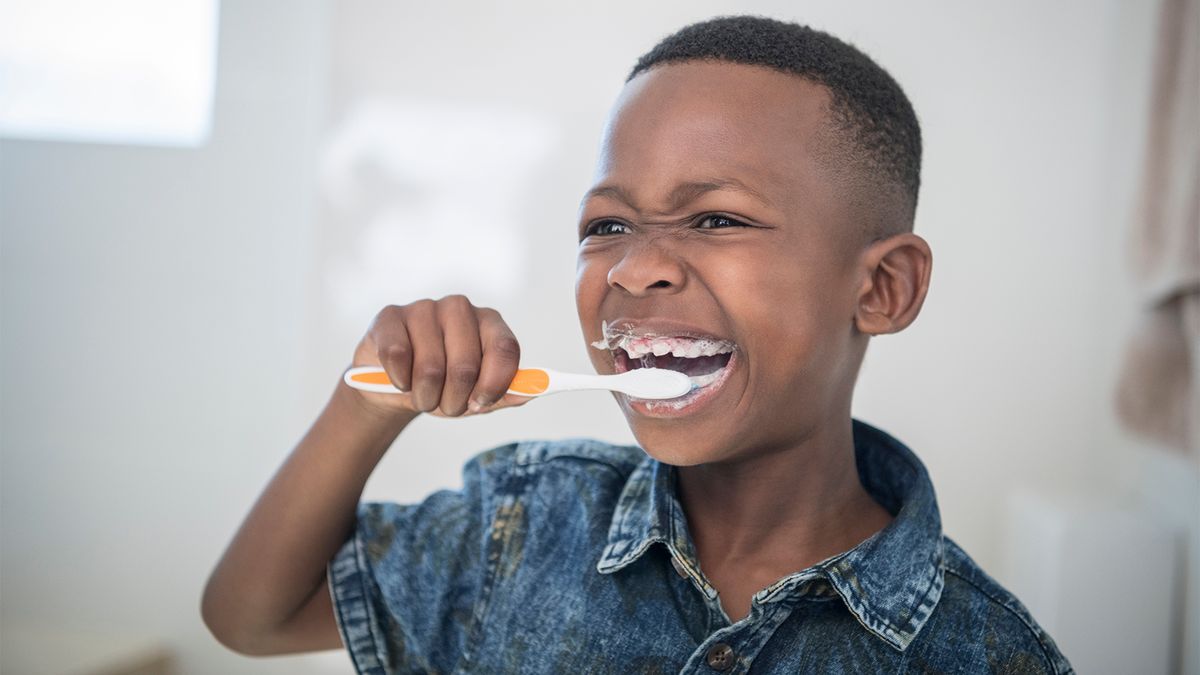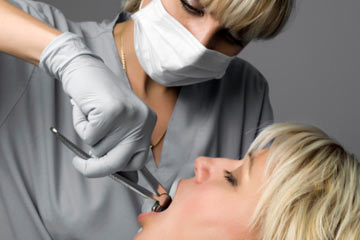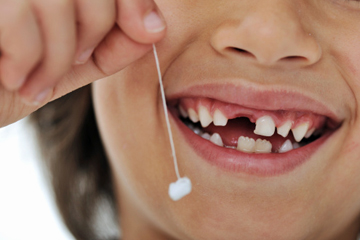
Do you use as much toothpaste as they do in toothpaste commercials? Do you apply your dental cream in a long, wavy dollop, covering the entire surface of the bristled end of the toothbrush, like icing on a fancy cake? If so, you’re probably wasting toothpaste, but for small children, the overuse of toothpaste could actually be causing some problems.
Don’t get me wrong, toothpaste is great: it makes your mouth taste fresher and it foams up like soap which gives the feeling that brushing is really cleaning something. We brush our teeth in order to scramble up the bacteria and sugars that tirelessly set up shop on our teeth, day and night, producing acids that eat away at tooth enamel, causing cavities and gum disease — but toothpaste isn’t totally necessary to do that job. The value you’re getting when you buy toothpaste is fluoride.
Fluoride is a mineral that occurs in rocks, and small amounts of it leach into water naturally. However, some countries in the world add a little fluoride to their water supplies, as it’s been proven to help teeth rebuild enamel at a faster rate than cavity-causing acids created by mouth bacteria can break it down. For children with baby teeth, fluoride has been shown to strengthen the enamel of developing adult teeth before they even erupt, making them more resistant to tooth decay in the long run. And even though many people (in the United States, at least) have access to fluoridated water, dentists recommend we remineralize adult teeth with extra fluoride as well, which is why a lot of toothpaste contains fluoride.
And yet, a study published Feb. 1, 2019 by the Center for Disease Control and Prevention (CDC) found that 40 percent of children ages 3 to 6 are using more toothpaste than dentists recommend. For the first time, questions about toothbrushing and toothpaste use were included in the CDC’s National Health and Nutrition Examination Survey. Around 1,700 parents and caregivers of children and adolescents reported on the frequency with which their kids brushed their teeth, the age when they started brushing and using toothpaste, as well as how many times they brushed each day and how much toothpaste they actually used.
The study found 80 percent of parents aren’t brushing their children’s teeth early enough, which can lead to early childhood cavities. Brushing itself is essential to preventing cavities, but fluoride pays a big part as well.
"Fluoride is critical for children as their teeth are developing, as it helps to strengthen their teeth — it keeps the enamel strong," says study author Dr. Gina Thornton-Evans, dental officer at the CDC Division of Oral Health in Atlanta. "Especially when they’re young — 6 years of age and younger — that’s the time when their swallowing reflex hasn’t developed, and they can actually swallow the toothpaste instead of spitting it out. When they take in too much toothpaste they can actually develop a condition called dental fluorosis on their permanent teeth, so we recommend parents just use a pea-sized amount of toothpaste on their toothbrushes."
Dental fluorosis is not a dangerous condition, but it can happen when a child consumes too much fluoride when her adult teeth are still developing under the gums. The result is mainly cosmetic — too much fluoride isn’t bad for the teeth (in fact, the American Dental Association says it "may make the teeth more resistant to decay"), but it does cause white lines or splotches on the teeth. This condition usually isn’t very noticeable, and it only occurs while the adult teeth are developing, and not once the teeth have already presented themselves in the child’s mouth.
But Thornton-Evans stresses that exceeding the daily recommended amount of fluoride a child consumes is just one problem that comes with parents not starting good brushing practices from infancy.
"We want parents to not only be supervising their children but start brushing their child’s teeth starting around 6 months when the first teeth come in," says Thornton-Evans.
Now That’s Interesting
In 2007, "counterfeit" Colgate toothpaste turned up in U.S. stores. Some of the product contained a toxic chemical found in antifreeze, and none of it contained fluoride.





